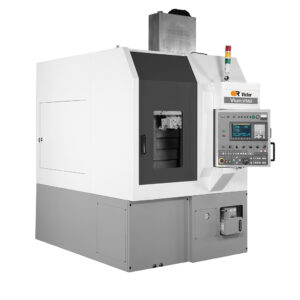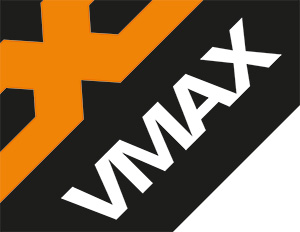Vertical Turning Lathes
The vertical turning lathe (VTL) or vertical turning centre has been a well-adopted technology for many generations. Unlike its horizontal counterpart, the VTL is configured in a different axes to provide application benefits for a variety of parts that are not particularly suited to horizontal lathes.
What is a Vertical Turning Lathe?
In contrast to the horizontal lathe, the vertical turning lathe is configured with a machine bed that sits above the powerful driven motor. Components are clamped to the machine bed and the spindle motor below drives the rotary table and the components clamped to it. Sitting above the table is a bridge-type design with a RAM cutting tool station that lowers the cutting tool to the workpiece in the Y-axis to undertake its material removal tasks.
Since its inception, the VTL hasn’t stopped evolving. New versions of vertical turning machine tools incorporate many of the productive technological innovations found in horizontal turning centres. Essentially, a vertical turning centre configuration takes a traditional lathe and stands it on its end.
The design of the VTL provides several important production and cost benefits, especially when machining large and heavy components and castings. The traditional VTL is perfect for turning heavy parts, brake discs, pump housings, aerospace and power generation parts and much more. But why?
What are the benefits of VTLs?
The vertical turning lathe is typically a large ram-type machine that can also be known as a vertical boring mill (VBM). An indexable tool turret head is what often distinguishes traditional VTLs from VBM variants. The machines are not typically high-production machines. The forte for the vertical turning lathe (VTL) is heavy-duty and high-power cutting of medium and large parts. So, what are the key factors when considering a VTL?
With parts that are often large in dimensions and weight, loading the components onto a machine bed as opposed to loading into a chuck on a horizontal turning lathe is a fundamental benefit. The gravitational pull of heavy parts on a horizontal machine can create issues with lifting and loading, set up and clamping, concentricity and subsequently clamping forces can be compromised by the centrifugal forces created by turning heavy components. All of this is eradicated with a VTL whereby the component sits on the machine bed and the subsequent clamping devices can be minimised. The result of clamping components on a bed is that stability and rigidity are increased and users can undertake heavy-duty cutting with ease. This increases productivity rates, reduces cycle times, improves tool life and surface finishes. Furthermore, by removing material in the vertical axis, chips automatically fall away from the immediate cutting area.
To undertake heavy-duty cutting, the vertical turning lathe often tends to have extremely powerful high-torque spindle motors that rotate at slower speeds than horizontal turning centres. This suits heavy-duty cutting on a stable and robust platform that is ideal for maximum material removal rates (MRR). The evolution of the VTL means that the vertical designation is now more suitable than ever for small to medium parts as well as the very large parts. Additionally, VTLs have multiple configurations for stationary and driven tools in multiple axes as well as automation that can increase the scope for these machines. And of course, in a world where floor space is an increasingly critical factor to engineers, by turning parts in the vertical axis, the VTL requires less floor space than the horizontal turning lathe. If you are interested in the benefits of the VTL, GM CNC has a range of options available for you to review.
If you are not sure which direction to take, please contact GM CNC where we have a complete range of machine tools that cover everything from 3-axis to 5-axis vertical machining centres, horizontal machining centres (HMC’s), turning centres and multi-spindle turning centres as well as a host of other machines to meet your needs.
Explore the Victor Vertical Turning Lathes from GM CNC here.

